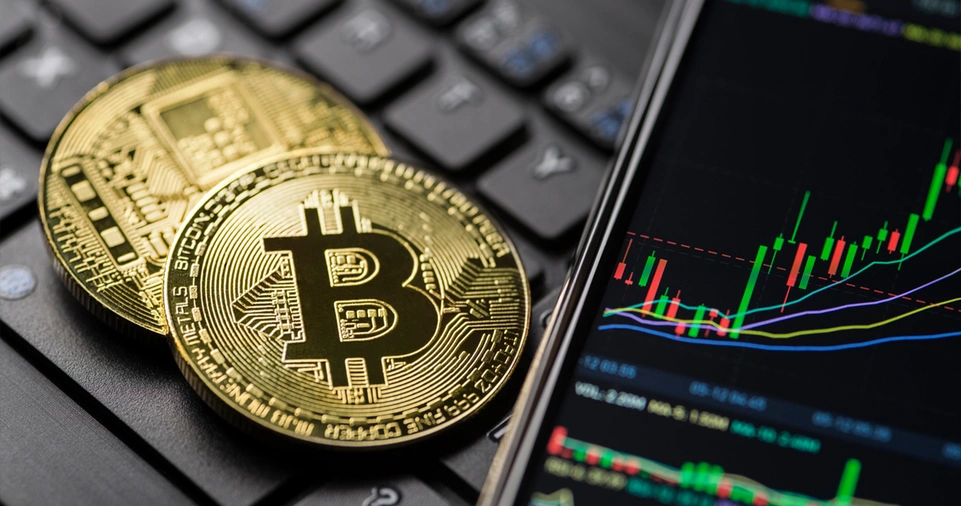Cryptocurrency markets are known for their extreme volatility, with rapid price swings that can either generate significant profits or lead to substantial losses.
For traders, understanding how to navigate these fluctuations is essential for mitigating risks and maximizing gains.
In this guide, we will explore practical strategies to trade safely in a volatile crypto market, covering risk management, technical analysis, fundamental factors, advanced strategies, security measures, and psychological aspects.
Understanding Crypto Market Volatility
What Causes Crypto Market Volatility?
Several factors contribute to the high volatility of cryptocurrency markets:
- Market Sentiment: News, social media trends, and influential opinions can cause price fluctuations.
- Liquidity Issues: Lower liquidity compared to traditional markets can lead to sharp price movements.
- Regulatory Changes: Government regulations and policies impact investor confidence and market stability.
- Speculation and Leverage: Many traders use leverage, which amplifies price swings.
- Technological Developments: Blockchain upgrades, security breaches, or forks can cause price volatility.
- Macroeconomic Factors: Global economic conditions, inflation, and interest rates affect investor behavior.
- Institutional Influence: Large trades from institutional investors can lead to sudden market shifts.
ALSO READ: How to Identify Market Cycles in Crypto Investing?
Key Strategies for Safe Crypto Trading
Risk Management Strategies
- Set Stop-Loss and Take-Profit Levels: A stop-loss order automatically sells an asset when it reaches a specific price, limiting potential losses. Similarly, take-profit orders help secure profits when prices hit a target.
- Use the 1-2% Rule: Avoid risking more than 1-2% of your total trading capital on a single trade. This reduces the impact of losses on your portfolio.
- Diversify Your Portfolio: Investing in different cryptocurrencies reduces risk exposure compared to focusing on a single asset. Consider allocating funds to different sectors, such as DeFi, NFTs, and layer-1 blockchains.
- Avoid Emotional Trading: Fear and greed often lead to impulsive decisions. Establish a well-defined strategy and stick to it.
- Position Sizing: Determine the amount to invest per trade based on risk tolerance and market conditions.
Technical Analysis for Crypto Traders
Technical analysis helps traders predict price movements based on historical data. Here are essential tools and indicators:
| Indicator | Function |
|---|---|
| Moving Averages (MA) | Identifies trends and potential reversal points. |
| Relative Strength Index (RSI) | Measures asset overbought or oversold conditions. |
| Bollinger Bands | Indicates price volatility levels. |
| MACD (Moving Average Convergence Divergence) | Shows trend strength and direction. |
| Support and Resistance Levels | Helps determine entry and exit points. |
| Candlestick Patterns | Analyzes price action for bullish or bearish trends. |
| Volume Analysis | Assesses market strength based on trade volume. |
Using a combination of these indicators enhances accuracy when making trading decisions.
Fundamental Analysis in Crypto Trading
Fundamental analysis involves evaluating the underlying value of a cryptocurrency. Key factors include:
- Project Utility: What problem does the cryptocurrency solve?
- Development Team & Partnerships: Strong teams and strategic collaborations add credibility.
- Market Adoption: Widespread use increases asset stability.
- Regulatory Developments: Compliance with regulations reduces long-term risk.
- Tokenomics: The supply, demand, and distribution structure of the coin.
- Roadmap & Future Development: Projects with strong future plans are more likely to succeed.
Choosing the Right Exchange
Selecting a secure and reliable exchange is crucial. Consider the following:
| Exchange Feature | Importance |
|---|---|
| Security Measures | Strong encryption, 2FA, and withdrawal whitelisting. |
| Liquidity | Higher liquidity ensures smoother trades. |
| Trading Fees | Lower fees mean higher profit margins. |
| User Experience | Intuitive interface for easy navigation. |
| Customer Support | Quick resolution of issues. |
| Insurance Funds | Protection against exchange failures. |
| Regulatory Compliance | Licensed exchanges provide additional security. |
Popular exchanges with strong security include Binance, Coinbase, Kraken, and KuCoin.
Leverage and Margin Trading Precautions
While leverage can amplify gains, it also increases risk. To trade safely:
- Start with low leverage (e.g., 2x-5x) instead of high leverage.
- Use stop-loss orders to minimize potential losses.
- Monitor liquidation prices to prevent forced closures of positions.
- Keep a portion of funds outside margin accounts to prevent total liquidation.
Avoiding Scams and Fraud
Crypto markets attract scams, including Ponzi schemes, fake ICOs, and phishing attacks. To stay safe:
- Verify sources before investing in a new token.
- Use official websites and avoid clicking on random links.
- Beware of promises of high returns with no risk.
- Secure wallets and private keys against hacking attempts.
- Use cold storage for large holdings to prevent online hacking.
Hedging Against Volatility
Hedging involves taking an opposite position to offset potential losses. Common methods include:
| Hedging Strategy | How It Works |
|---|---|
| Stablecoin Conversion | Moving funds into USDT, USDC, or BUSD during market downturns. |
| Futures Contracts | Shorting BTC or ETH to protect against price drops. |
| Options Trading | Buying put options to hedge against falling prices. |
| Portfolio Rebalancing | Adjusting asset allocation based on market conditions. |
Arbitrage Trading
Arbitrage takes advantage of price differences across exchanges. Types include:
- Spatial Arbitrage: Buying on one exchange and selling on another.
- Triangular Arbitrage: Converting between multiple cryptocurrencies to profit from price discrepancies.
- Statistical Arbitrage: Using algorithms to find and execute arbitrage trades efficiently.
ALSO READ: How to Build Your NFT Portfolio for Long-Term Success?
Psychological Aspects of Trading
Trading requires emotional discipline. Follow these principles:
- Develop a Trading Plan: Define strategies before entering trades.
- Manage Stress and Avoid FOMO: Fear of missing out leads to bad decisions.
- Stick to Data-Driven Decisions: Avoid impulsive actions based on rumors.
- Take Breaks from Trading: Avoid burnout and emotional fatigue.
- Use a Trading Journal: Track past trades to improve future strategies.
ALSO READ: How to Understand DeFi Smart Contracts and Their Functionality?
Conclusion
Navigating the volatile crypto market requires strategic planning, risk management, and constant learning.
By using stop-loss orders, diversifying investments, analyzing market trends, and managing emotions, traders can mitigate risks while maximizing potential gains.
As the crypto industry continues to evolve, staying updated on new strategies and security practices remains essential for safe trading.
By following the principles outlined in this guide, you can trade more confidently and reduce the chances of significant losses in the unpredictable crypto market.







